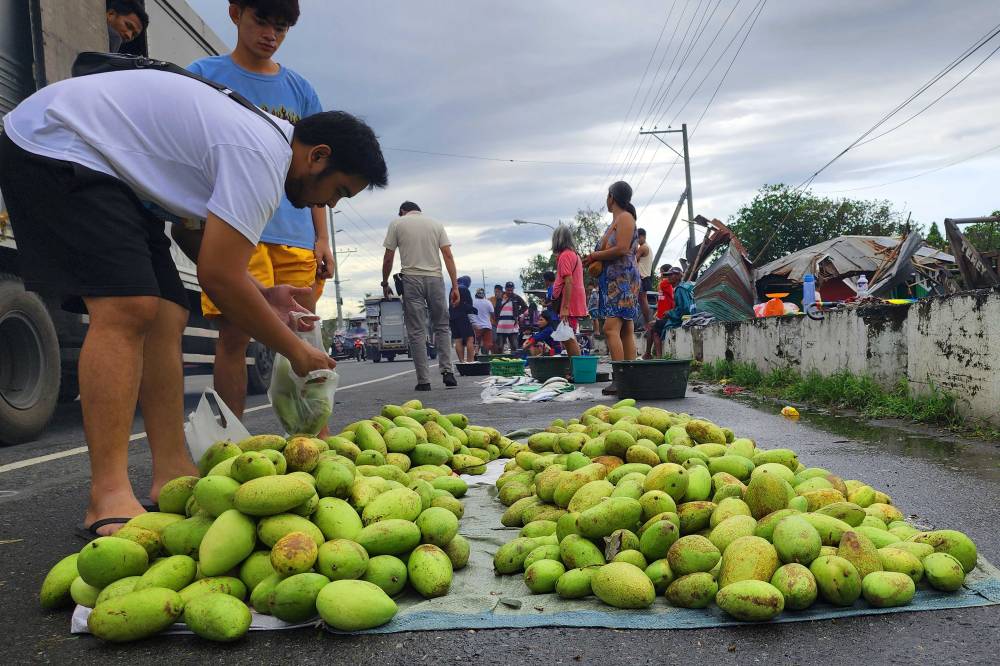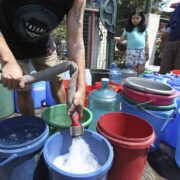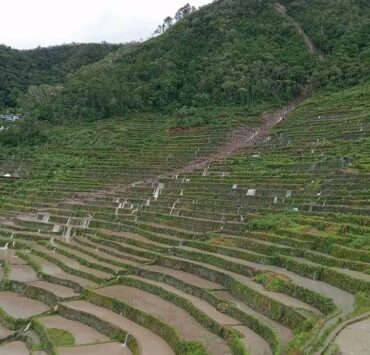Pangasinan mango growers seek aid over typhoon losses

CALASIAO, PANGASINAN—The strong winds of Supertyphoon “Uwan” (international name: Fung-wong) devastated Pangasinan’s thriving mango industry, stripping trees of fruits at all stages of growth and leaving farmers reeling from massive losses.
“We are assessing the industry’s losses in the province, and so far, reports showed we lost 90 percent of mango fruits from fruiting to maturation stage, or 25 to 85 days,” Mike Garcia, president of the Calasiao Mango and High Value Crops Farmers Association, told the Inquirer.
Garcia said similar reports were coming in from mango-producing areas across the Ilocos, Cagayan Valley, and Central Luzon regions, though Calabarzon (Cavite, Laguna, Batangas, Rizal, Quezon) and Mimaropa (Mindoro, Marinduque, Romblon, Palawan) were largely spared as Uwan only brought heavy rains there.
According to the Provincial Agriculture Office, total mango production in the province reached 102,823.30 metric tons in 2023. Pangasinan is the biggest mango producer in the Ilocos, the top mango-producing region in the country.
In Manaoag town, farmer Lito Arenas reported that many mango trees had either lost major branches or were uprooted entirely.
“Maybe 10 to 15 trees were toppled. We have to wait to find out if they can still survive,” he said.
Arenas added that about 97 percent of his dropped fruits, age 90 to 94 days, were already nearing harvest—typically scheduled between the third week of November and January. Fruits age 38 to 40 days accounted for another 70-percent loss.
Fully mature mangoes reach harvest stage at 100 to 105 days, he said.
“We have been pickling [mangoes] for two days now but we can only do so much. I have told the farm workers to stop already. It’s a big loss really, as we can only recover 20 ‘kaing’ (bamboo basket) out of 2,000 kaing we usually harvest,” Arenas said. A kaing contains 18 kilos of mangoes.
Before the typhoon hit, mature mangoes were selling for P90 to P100 per kilo, but the morning after Uwan, roads were littered with green carabao mangoes being sold for P10 to P15 per kilo—fruits that were “too sour and not mature enough for sale,” Garcia said.
Hoping for recovery
“We’re already giving them away, but still nobody wants them,” Arenas lamented, saying many fruits were too bruised to sell after falling to the ground.
Garcia said his group, composed of 60 members tending to 5,000 trees across 100 hectares, plans to induce the trees to flower again in hopes of a recovery harvest before the Holy Week next year.
“There’s still time to recover,” he said.
In Villasis town, farm owner Rosendo So said strong winds toppled at least 15 mango trees age at least 60 years.
“All fruits are gone from 1,000 trees, and we have to wait for one and a half months before we can induce by spraying,” he said, adding that older trees bore the brunt of the storm while 30- to 35-year-old trees survived.
Arenas, however, warned that many trees may be too stressed to bear fruit soon.
“If that happens, we will have to wait for another year to induce the trees,” he said.
Garcia said most mango growers are hoping for financial assistance as they face mounting debts for farm inputs such as fruit inducers and pesticides, which were mostly purchased on credit.
On Tuesday, the Pangasinan provincial board, led by Vice Gov. Mark Lambino, passed Resolution No. 934-2025 placing the entire province under a state of calamity.
Gov. Ramon Guico III said the provincial government would extend assistance to affected farmers and communities.





















